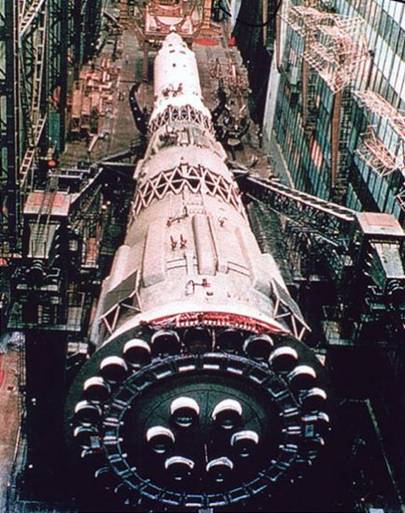Click here for Part 1.
On September 27th, 2016, SpaceX uploaded a video showing what their upcoming super-heavy launch vehicle plans were – the Interplanetary Transport System. This massive booster was going to launch a Mars bound vehicle into Earth orbit. The actual Mars bound ship would insert itself into orbit, with the ITS booster basically heaving it most of the way there, before, much like the Falcon 9 1st stages now do, it would return to a safe landing for reflight.
However, unlike the Falcon 9, this booster would land back on the launch pad, and be relaunched in just a few days, this time carrying a fueling tanker to the Mars bound vehicle – refueling it to begin it’s flight to Mars. Of course, the Mars vehicle was going to land, and then launch itself back off of the red planet and back to Earth and, of course it too was supposed to be reusable.
SpaceX was promoting this less than a month after one of their rockets had blown up on the pad, destroying everything – the rocket, the payload, and the launch pad infrastructure. You’re telling me a month after that, they were proposing the largest rocket ever to do all this? Seriously?

You just had a rocket explode, and you’re going to propose WHAT?
Oh yes, they were serious.
What caught my attention though, out of all of this, was simply the complexity of the machine. Namely, it’s engines. It was designed to have 42 engines.
42. Let that sink in.
The Saturn V, the rocket that got us to the moon, had a total of 11 primary engines – 5 on the 1st stage, 5 on the second, and 1 on the 3rd. This one machine was going to have 42 of them. This was just crazy to me – why, oh why, would you go that route? There is a balance in rocketry that has generally tipped towards fewer, more powerful engines being much better than many small ones – you get better weight savings by having a few larger engines, for one. For another, though you have less chance of catastrophic failure.
That was what really got to me. Seeing a proposal for a rocket with 42 engines seriously had me thinking – do these guys remember the last time a rocket like that was tried? It failed miserably multiple times, never even making it to the second stage!
Of course I talk about the Soviet manned Moon rocket attempt, the N-1.

The N-1, showing its 30 first stage engines.
Now, this isn’t a fair comparison, I’ll admit that now, and I would then – the N-1 was made with 1960’s tech, and was built under conditions where the entire machine couldn’t even be tested, let alone all those engines. Much of what flew wasn’t tested well at all, and while the design of the engines was good (so good that we actually use the same unused engines built for the N-1 in the 60’s and 70’s) the machine itself just couldn’t be checked out, and when something failed, it took everything with it.
This is a lesson I thought history had taught us – something proven in engineering, that you want to keep a system as simple as possible while still being able to do what it was built to do. The more parts you have, the higher a chance of failure, so build it as simply as you can and you decrease the chance of failure.

This is something I thought everyone would know, that was common sense to anyone technically inclined. I would soon find out how wrong I was.
Now, the internet is designed for free expression, right? That’s kind of a facet about it that’s just understood. I figured I would comment on the video what I thought – that this was a little much.
So I made my comment, and quickly, as I like to do, followed it up with 2 additional comments to flesh out my idea and thoughts. I phrased things nicely, and I think in an understandable way. I was polite, but honest in what I thought – something you would think wouldn’t be an issue.
I was wrong. I was damn wrong.
This was the moment I discovered the Cult of SpaceX. I wouldn’t fully realize this until months later, but what I experienced that day would forever change how I looked at SpaceX and it’s fanbase, and would also remind me something I’ve always known about social media.
In part 3, we’ll take a look at just what actually happened, from the screenshots I took and what I remember having happened on that day.
Part 3 coming soon…
Related Links:
SpaceX Interplanetary Transport System
One Year Ago I Discovered The Cult Of SpaceX

